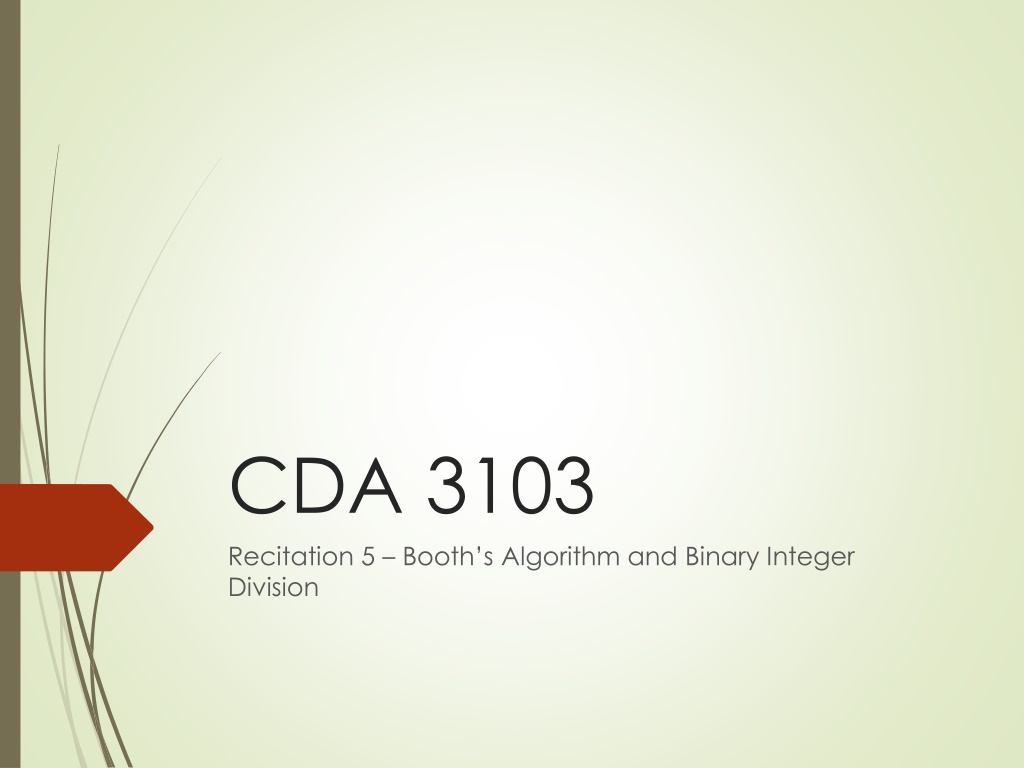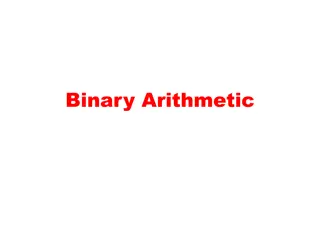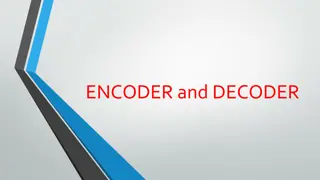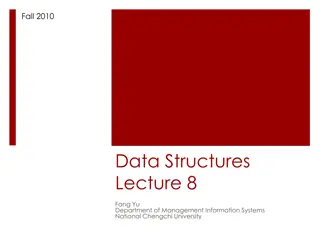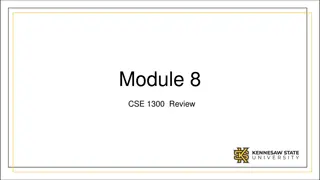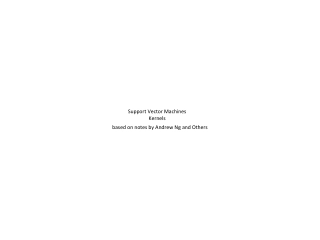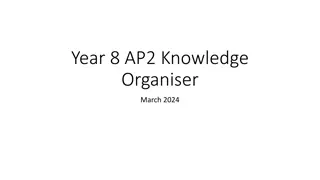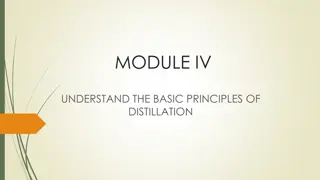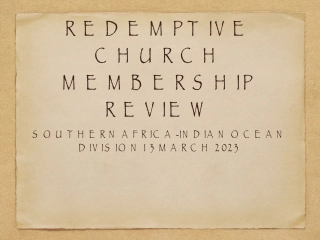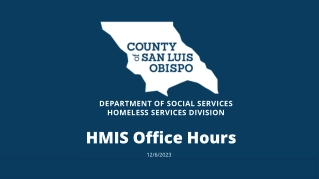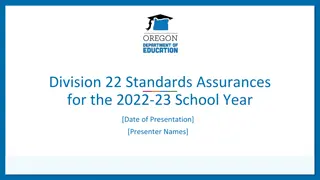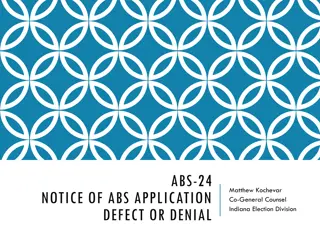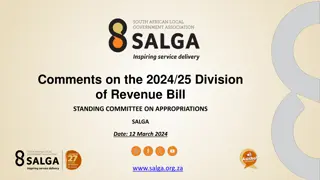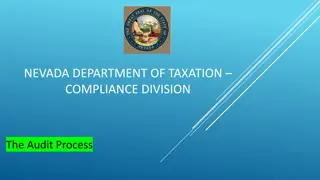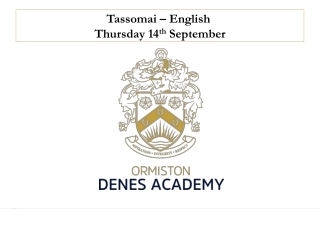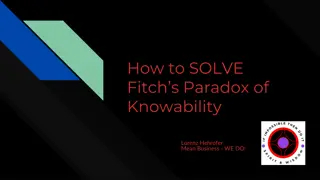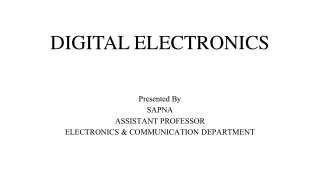Understanding Booth's Algorithm for Binary Integer Division
Learn about Booth's Algorithm and how it facilitates binary integer division. Discover key points to remember when using the algorithm, steps to initiate the process, and a detailed example to illustrate the multiplication of two operands using Booth's Algorithm.
Download Presentation
Please find below an Image/Link to download the presentation.
The content on the website is provided AS IS for your information and personal use only. It may not be sold, licensed, or shared on other websites without obtaining consent from the author. Download presentation by click this link. If you encounter any issues during the download, it is possible that the publisher has removed the file from their server.
Presentation Transcript
CDA 3103 Recitation 5 Booth s Algorithm and Binary Integer Division
Booth's Algorithm Example
Points to remember When using Booth's Algorithm: You will need twice as many bits in your product as you have in your original two operands. The leftmost bit of your operands (both your multiplicand and multiplier) is a SIGN bit, and cannot be used as part of the value.
To begin Decide which operand will be the multiplier and which will be the multiplicand Convert both operands to two's complement representation using X bits X must be at least one more bit than is required for the binary representation of the numerically larger operand Begin with a product that consists of the multiplier with an additional X leading zero bits
Example For our example, let's multiply (-5) x 2 The numerically larger operand (5) would require 3 bits to represent in binary (101). So we must use AT LEAST 4 bits to represent the operands, to allow for the sign bit. Let's use 5-bit 2's complement: -5 is 11011 (multiplier) 2 is 00010 (multiplicand)
Beginning Product The multiplier is: 11011 Add 5 leading zeros to the multiplier to get the beginning product: 00000 11011
Step 1 for each pass Use the LSB (least significant bit) and the previous LSB to determine the arithmetic action. If it is the FIRST pass, use 0 as the previous LSB. Possible arithmetic actions: 00 no arithmetic operation 01 add multiplicand to left half of product 10 subtract multiplicand from left half of product 11 no arithmetic operation
Step 2 for each pass Perform an arithmetic right shift (ASR) on the entire product. NOTE: For X-bit operands, Booth's algorithm requires X passes.
Example Let's continue with our example of multiplying (-5) x 2 Remember: -5 is 11011 (multiplier) 2 is 00010 (multiplicand) And we added 5 leading zeros to the multiplier to get the beginning product: 00000 11011
Example continued Initial Product and previous LSB 00000 11011 0 (Note: Since this is the first pass, we use 0 for the previous LSB) Pass 1, Step 1: Examine the last 2 bits 00000 11011 0 The last two bits are 10, so we need to: subtract the multiplicand from left half of product
Example: Pass 1 continued Pass 1, Step 1: Arithmetic action (left half of product) (1) 00000 (mulitplicand) -00010 (uses a phantom borrow) 11110 Place result into left half of product 11110 11011 0
Example: Pass 1 continued Pass 1, Step 2: Arithmetic Shift Right Before ASR 11110 11011 0 After ASR 11111 01101 1 (left-most bit was 1, so a 1 was shifted in on the left) Pass 1 is complete.
Example: Pass 2 Current Product and previous LSB 11111 01101 1 Pass 2, Step 1: Examine the last 2 bits 11111 01101 1 The last two bits are 11, so we do NOT need to perform an arithmetic action -- just proceed to step 2.
Example: Pass 2 continued Pass 2, Step 2: ASR (arithmetic shift right) Before ASR 11111 01101 1 After ASR 11111 10110 1 (left-most bit was 1, so a 1 was shifted in on the left) Pass 2 is complete.
Example: Pass 3 Current Product and previous LSB 11111 10110 1 Pass 3, Step 1: Examine the last 2 bits 11111 10110 1 The last two bits are 01, so we need to: add the multiplicand to the left half of the product
Example: Pass 3 continued Pass 3, Step 1: Arithmetic action (1) 11111 (left half of product) +00010 (mulitplicand) 00001 (drop the leftmost carry) Place result into left half of product 00001 10110 1
Example: Pass 3 continued Pass 3, Step 2: ASR (arithmetic shift right) Before ASR 00001 10110 1 After ASR 00000 11011 0 (left-most bit was 0, so a 0 was shifted in on the left) Pass 3 is complete.
Example: Pass 4 Current Product and previous LSB 00000 11011 0 Pass 4, Step 1: Examine the last 2 bits 00000 11011 0 The last two bits are 10, so we need to: subtract the multiplicand from the left half of the product
Example: Pass 4 continued Pass 4, Step 1: Arithmetic action (1) 00000 (left half of product) -00010 (mulitplicand) 11110 (uses a phantom borrow) Place result into left half of product 11110 11011 0
Example: Pass 4 continued Pass 4, Step 2: ASR (arithmetic shift right) Before ASR 11110 11011 0 After ASR 11111 01101 1 (left-most bit was 1, so a 1 was shifted in on the left) Pass 4 is complete.
Example: Pass 5 Current Product and previous LSB 11111 01101 1 Pass 5, Step 1: Examine the last 2 bits 11111 01101 1 The last two bits are 11, so we do NOT need to perform an arithmetic action -- just proceed to step 2.
Example: Pass 5 continued Pass 5, Step 2: ASR (arithmetic shift right) Before ASR 11111 01101 1 After ASR 11111 10110 1 (left-most bit was 1, so a 1 was shifted in on the left) Pass 5 is complete.
Final Product We have completed 5 passes on the 5- bit operands, so we are done. Dropping the previous LSB, the resulting final product is: 11111 10110
Verification To confirm we have the correct answer, convert the 2's complement final product back to decimal. Final product: 11111 10110 Decimal value: -10 which is the CORRECT product of: (-5) x 2
Signed Division For our example, we will calculate 15 / -3 Store the signs of the divisor and dividend Convert negative values to positive Complement quotient and remainder if necessary Dividend and Remainder are defined to have same sign Quotient negated if Divisor sign and Dividend sign disagree
Example Using 5-bit 2 s Complement values: 15 = 01111 -3 = 11101 Convert divisor to positive: 3 = 00011
For each Pass Subtract the divisor from the left half of the remainder and place the result in the left half of the remainder If the remainder is positive Shift the remainder to the left, shifting in a 1 If the remainder is negative Restore the previous remainder Shift to the remainder to the left, shifting in a 0
Example Dividend= 01111 (15) Divisor = 00011 (3) -Divisor = 11101 (-3) Initialize: Remainder: 00000 01111 Shift remainder left 1 bit: 00000 11110
Example, Pass 1 Subtract the divisor from the left half of the remainder 00000 (left half of the remainder) + 11101 (negative form of divisor) 11101 Place result into left half of product 11101 11110
Example, Pass 1 Check to see if the remainder is negative or positive 11101 11110 Starts with a 1 therefore negative Restore previous value 00000 11110 shift to the left, shift in 0 00001 11100
Example, Pass 2 Subtract the divisor from the left half of the remainder 00001 (left half of the remainder) + 11101 (negative form of divisor) 11110 Place result into left half of product 11110 11100
Example, Pass 2 Check to see if the remainder is negative or positive 11110 11100 Starts with a 1 therefore negative Restore previous value 00001 11100 shift to the left, shift in 0 00011 11000
Example, Pass 3 Subtract the divisor from the left half of the remainder 00011 (left half of the remainder) + 11101 (negative form of divisor) 00000 Place result into left half of product 00000 11000
Example, Pass 3 Check to see if the remainder is negative or positive 00000 11000 Starts with a 0 therefore positive shift to the left, shift in 1 00001 10001
Example, Pass 4 Subtract the divisor from the left half of the remainder 00001 (left half of the remainder) + 11101 (negative form of divisor) 11110 Place result into left half of product 11110 10001
Example, Pass 4 Check to see if the remainder is negative or positive 11110 10001 Starts with a 1 therefore negative Restore previous value 00001 10001 shift to the left, shift in 0 00011 00010
Example, Pass 5 Subtract the divisor from the left half of the remainder 00011 (left half of the remainder) + 11101 (negative form of divisor) 00000 Place result into left half of product 00000 00010
Example, Pass 5 Check to see if the remainder is negative or positive 00000 00010 Starts with a 0 therefore positive shift to the left, shift in 1 00000 00101
To Finish Shift the left half of the remainder to the right 1 bit 00000 00101 Set sign bits Remainder is zero Need to negate quotient because divisor (-) and dividend (+) have differing signs 00101 => 11011
Final Result We have completed 5 passes on the 5- bit operands, so we are done. The resulting final quotient is 11011 The resulting final remainder is 00000
Verification To confirm we have the correct answer, convert the 2's complement quotient back to decimal. Quotient: 11011 Decimal value: -5 which is the CORRECT result of: 15 / -3
